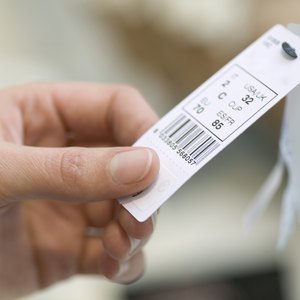
In most cases a bar code does not provide information concerning where a product was purchased. The most common bar code is the UPC code, found on all packaged goods at grocery stores. It only identifies the product (first five digits) and the company (second five digits). However, a company may make a product specific to a retailer or a geographic area, in which case the product identification would provide some information about where the product was purchased.
Bar Code Types
There are over a hundred different bar code types. Most bar codes are similar to the UPC code, with a series of thick lines, thin lines, and spaces that are converted to numbers by the scanning software. The numbers are usually printed below the bars. Multiple bar code types can be combined into a single code. QR codes are a newer format that can contain much more data.
Bar Code Information
Bar codes can contain information about the product, the shipment, the expiry date and any attribute the user specifies, including where an item will be sold. The bar code system is managed by an international trade organization called GS1, however, they only assign company prefixes. The rest of the numbers are assigned by the company, and the meaning of some numbers may not be publicly available.
References
Writer Bio
Timothy Smithee is a technical writer specializing in internal operating procedures for IT and manufacturing support. He has written for diverse publications including "RV Lifestyle" and "Everyman." He holds a Bachelor of Arts in English literature from the University of Western Ontario and a Bachelor of Arts in film studies from Carleton University.

